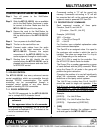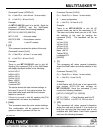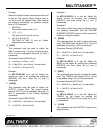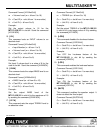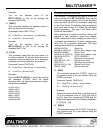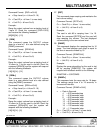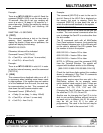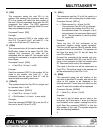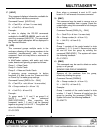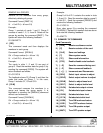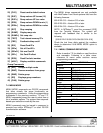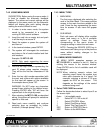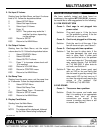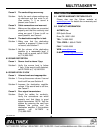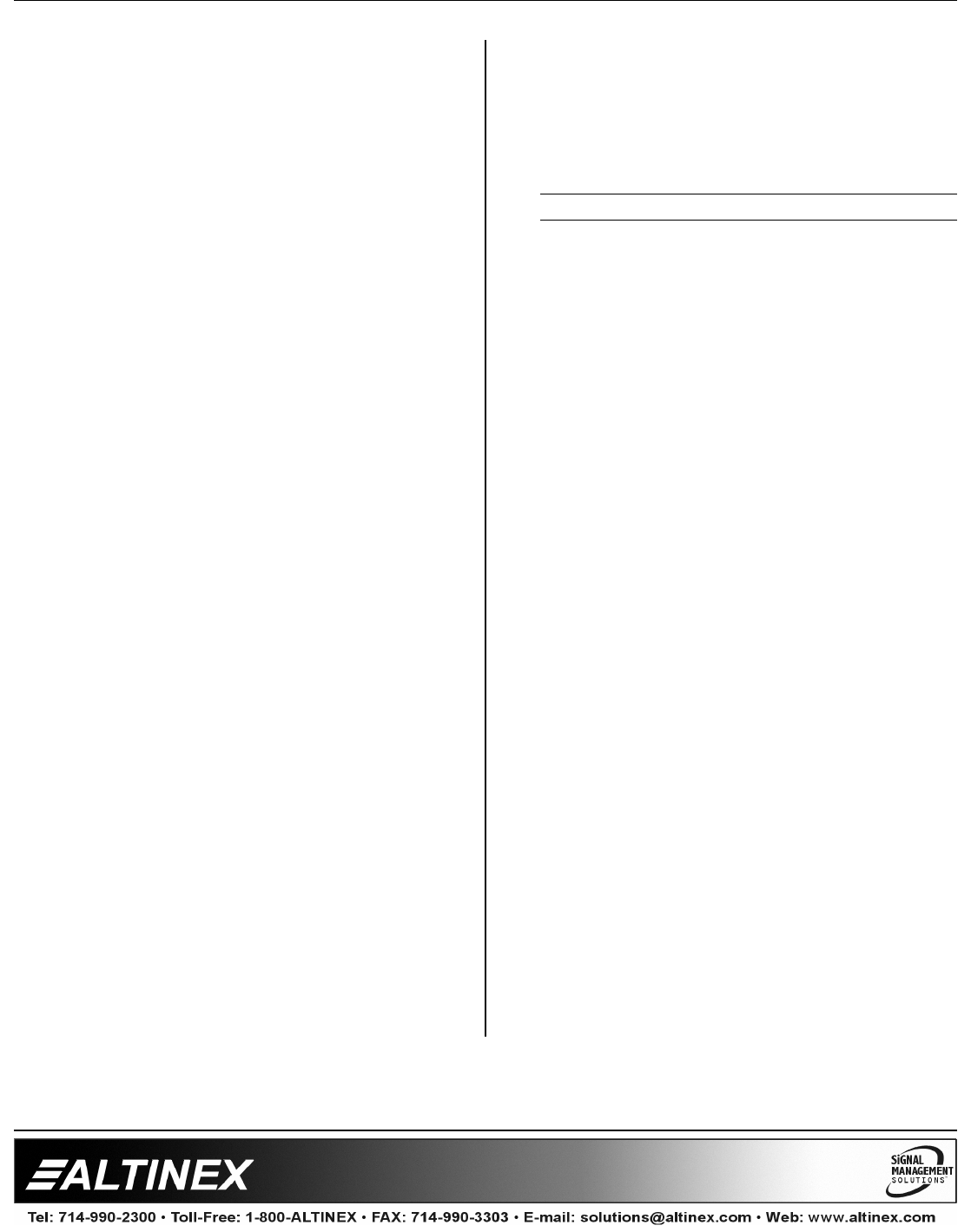
MULTITASKER™
400-0209-002
16
16
Example:
There is an MT113-100/101 in slot #5. Send the
command [RAMP=16C5] to set the ramp rate to
16 seconds. After this is set, any ramping will
occur at a rate of 16 steps in 16 seconds, or 1
second per step. Confirm the setting by sending
the command [RAMPC5] and receiving the
feedback:
RAMPTIME = 16 SECONDS
30. [TEST]
This command performs a test on the internal
memory. Upon completion, the system will
display the results. If there are no problems, the
system will display the following:
MEMORY IS GOOD
Otherwise, failures will be indicated.
Command Format: [TESTCnUi]
Cn = Card ID (n = slot # from 1 to max slots)
Ui = Unit ID (i = # from 0 to 9)
Example:
There is an MT113-100/101 in slot #10. In order
to test the internal memory, send the command
[TESTC10].
31. [FBD]
This command turns feedback delay on or off. It
is necessary when installing some newer cards
in older systems. If the system does not receive
all of the feedback from the card, the card may
be communicating too fast. This command will
slow down the card's communication rate.
Command Format: [FBDmCnUi]
m = Delay (0= no delay, 1= delay 100mS)
Cn = Card ID (n = # from 1 to max slots)
Ui = Unit ID (i = from 0 to 9)
Example:
The command [HELPC4] is sent to the card in
slot #4. Some of the HELP file is displayed on
the screen, but most is missing. Send the
command [FBD1C4] to slow down the rate at
which the card sends feedback to the system.
CARD ID COMMANDS
The default Card ID is the same as the card slot
number. The next several commands allow the
user to change the Card ID to a value other than
the slot number.
The ID commands work with all MultiTasker
Front Panel systems. However, front panels that
have firmware releases prior to the following will
not be able to address Card ID's greater than
the number of slots in the system:
690-0122-019 = Version 019 or later.
690-0123-005 = Version 005 or later.
690-0124-019 = Version 019 or later.
NOTE: In MTSetup, send the command [VER]
from the Terminal Window. The system will
respond with feedback similar to the following:
[690-0122-015 690-0123-005 690-0124-019]
Check the last three digits against the numbers
above to determine if the Card ID commands
can address all 99 Card ID's.
Some cards require more than one slot in the
MultiTasker system. As an example, some
matrix switcher cards require 4 slots. If there are
5 of these cards installed, they would be
numbered C4, C8, C12, C16 and C20.
Changing the Card ID allows the user to define
the cards as C1, C2, C3, C4 and C5.
Another use for changing the Card ID is to be
able to use multiple systems without having to
set each unit to a different Unit ID. All systems
may be left as Unit ID 0 for ease of
programming. The cards in the first unit may be
numbered 1-10 and in the second unit 11-20.




